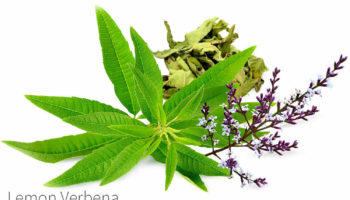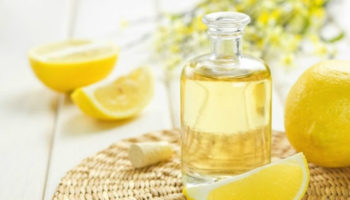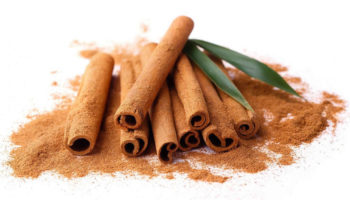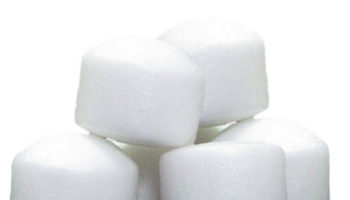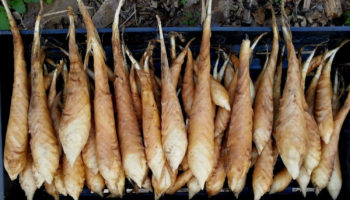Contents
What is coriander
Coriander (Coriandrum sativum Linn.), also known as cilantro (in the US and in Canada) or Chinese parsley, is an annual herb in the family Apiaceae (Umbelliferae) that has been extensively cultivated for centuries in many temperate climates such as the Middle East, Latin American, Africa, and Asia 1. All parts of the coriander plant are edible, both the seeds and aerial parts of coriander are used as food elements, but the fresh leaves and the dried seeds are the parts most traditionally used in cooking.
All parts of the plant are edible, but the fresh leaves and the dried seeds are the parts most traditionally used in cooking. Coriander is used in cuisines throughout the world.
The leaves are variously referred to as coriander leaves, fresh coriander, dhania, Chinese parsley, or cilantro. Fresh leaves are used as a flavoring agent, and dried coriander seeds are used as spices in food preparation 2.
Coriander leaves
The coriander leaves have a different taste from the seeds, with citrus overtones. In addition to volatile oils, caffeic acid and flavonoid glycosides have been isolated from coriander leaves 3. Some people may be genetically predisposed to find the leaves to have unpleasant soapy taste or a rank smell. The fresh leaves are an ingredient in many South Asian foods (such as chutneys and salads); in Chinese and Thai dishes; in Mexican cooking, particularly in salsa and guacamole and as a garnish; and in salads in Russia. In Portugal, chopped coriander is used in the bread soup Açorda, and in India, chopped coriander is a garnish on Indian dishes such as dal. As heat diminishes their flavor, coriander leaves are often used raw or added to the dish immediately before serving. In Indian and Central Asian recipes, coriander leaves are used in large amounts and cooked until the flavor diminishes. The leaves spoil quickly when removed from the plant, and lose their aroma when dried or frozen.
Figure 1. Coriander leaf, seeds and root
Coriander seeds
The dry coriander fruits are known as coriander seeds. The word “coriander” in food preparation may refer solely to these seeds (as a spice), rather than to the plant. Coriander seeds have a lemony citrus flavor when crushed, due the seeds are essential oils and monoterpenoids, such as linalool and pinene. It is described as warm, nutty, spicy, and orange-flavored.
The variety Coriandrum sativum vulgare has a fruit diameter of 3–5 mm (0.12–0.20 in), while var. Coriandrum sativum microcarpum fruits have a diameter of 1.5–3 mm (0.06–0.12 in). Large-fruited types are grown mainly by tropical and subtropical countries, e.g. Morocco, India, and Australia, and contain a low volatile oil content (0.1-0.4%). They are used extensively for grinding and blending purposes in the spice trade. Types with smaller fruit are produced in temperate regions and usually have a volatile oil content around 0.4-1.8%, so are highly valued as a raw material for the preparation of essential oil.
Coriander is commonly found both as whole dried seeds and in ground form. Roasting or heating the seeds in a dry pan heightens the flavour, aroma, and pungency. Ground coriander seed loses flavour quickly in storage and is best ground fresh. Coriander seed is a spice in garam masala and Indian curries which often employ the ground fruits in generous amounts together with cumin, acting as a thickener in a mixture called dhana jeera.
Roasted coriander seeds, called dhana dal, are eaten as a snack. They are the main ingredient of the two south Indian dishes sambhar and rasam.
Outside of Asia, coriander seed is used widely in the process for pickling vegetables. In Germany and South Africa (see boerewors), the seeds are used while making sausages. In Russia and Central Europe, coriander seed is an occasional ingredient in rye bread (e.g. Borodinsky bread), as an alternative to caraway.
Coriander seeds are used in brewing certain styles of beer, particularly some Belgian wheat beers. The coriander seeds are used with orange peel to add a citrus character.
Coriander seed is one of the main traditional ingredients in the South African Boerewors, a popular spiced mixed-meat sausage.
Coriander Nutrition Facts
The nutritional profile of coriander seeds is different from the fresh stems or leaves. Leaves are particularly rich in vitamin A, vitamin C and vitamin K, with moderate content of dietary minerals. Although seeds generally have lower content of vitamins, they do provide significant amounts of dietary fiber, calcium, selenium, iron, magnesium and manganese.
Table 1. Coriander (cilantro) leaves, raw
| Nutrient | Unit | Value per 100 g | |||||||||
| Approximates | |||||||||||
| Water | g | 92.21 | |||||||||
| Energy | kcal | 23 | |||||||||
| Energy | kJ | 95 | |||||||||
| Protein | g | 2.13 | |||||||||
| Total lipid (fat) | g | 0.52 | |||||||||
| Ash | g | 1.47 | |||||||||
| Carbohydrate, by difference | g | 3.67 | |||||||||
| Fiber, total dietary | g | 2.8 | |||||||||
| Sugars, total | g | 0.87 | |||||||||
| Minerals | |||||||||||
| Calcium, Ca | mg | 67 | |||||||||
| Iron, Fe | mg | 1.77 | |||||||||
| Magnesium, Mg | mg | 26 | |||||||||
| Phosphorus, P | mg | 48 | |||||||||
| Potassium, K | mg | 521 | |||||||||
| Sodium, Na | mg | 46 | |||||||||
| Zinc, Zn | mg | 0.5 | |||||||||
| Copper, Cu | mg | 0.225 | |||||||||
| Manganese, Mn | mg | 0.426 | |||||||||
| Selenium, Se | µg | 0.9 | |||||||||
| Vitamins | |||||||||||
| Vitamin C, total ascorbic acid | mg | 27 | |||||||||
| Thiamin | mg | 0.067 | |||||||||
| Riboflavin | mg | 0.162 | |||||||||
| Niacin | mg | 1.114 | |||||||||
| Pantothenic acid | mg | 0.57 | |||||||||
| Vitamin B-6 | mg | 0.149 | |||||||||
| Folate, total | µg | 62 | |||||||||
| Folic acid | µg | 0 | |||||||||
| Folate, food | µg | 62 | |||||||||
| Folate, DFE | µg | 62 | |||||||||
| Choline, total | mg | 12.8 | |||||||||
| Vitamin B-12 | µg | 0 | |||||||||
| Vitamin B-12, added | µg | 0 | |||||||||
| Vitamin A, RAE | µg | 337 | |||||||||
| Retinol | µg | 0 | |||||||||
| Carotene, beta | µg | 3930 | |||||||||
| Carotene, alpha | µg | 36 | |||||||||
| Cryptoxanthin, beta | µg | 202 | |||||||||
| Vitamin A, IU | IU | 6748 | |||||||||
| Lycopene | µg | 0 | |||||||||
| Lutein + zeaxanthin | µg | 865 | |||||||||
| Vitamin E (alpha-tocopherol) | mg | 2.5 | |||||||||
| Vitamin E, added | mg | 0 | |||||||||
| Vitamin D (D2 + D3) | µg | 0 | |||||||||
| Vitamin D | IU | 0 | |||||||||
| Vitamin K (phylloquinone) | µg | 310 | |||||||||
| Lipids | |||||||||||
| Fatty acids, total saturated | g | 0.014 | |||||||||
| 04:00:00 | g | 0 | |||||||||
| 06:00:00 | g | 0 | |||||||||
| 08:00:00 | g | 0 | |||||||||
| 10:00:00 | g | 0 | |||||||||
| 12:00:00 | g | 0 | |||||||||
| 14:00:00 | g | 0 | |||||||||
| 16:00:00 | g | 0.012 | |||||||||
| 18:00:00 | g | 0.001 | |||||||||
| Fatty acids, total monounsaturated | g | 0.275 | |||||||||
| 16:1 undifferentiated | g | 0.002 | |||||||||
| 18:1 undifferentiated | g | 0.273 | |||||||||
| 20:01:00 | g | 0 | |||||||||
| 22:1 undifferentiated | g | 0 | |||||||||
| Fatty acids, total polyunsaturated | g | 0.04 | |||||||||
| 18:2 undifferentiated | g | 0.04 | |||||||||
| 18:3 undifferentiated | g | 0 | |||||||||
| 18:04:00 | g | 0 | |||||||||
| 20:4 undifferentiated | g | 0 | |||||||||
| 20:5 n-3 (EPA) | g | 0 | |||||||||
| 22:5 n-3 (DPA) | g | 0 | |||||||||
| 22:6 n-3 (DHA) | g | 0 | |||||||||
| Fatty acids, total trans | g | 0 | |||||||||
| Cholesterol | mg | 0 | |||||||||
| Phytosterols | mg | 5 | |||||||||
| Stigmasterol | mg | 3 | |||||||||
| Campesterol | mg | 0 | |||||||||
| Beta-sitosterol | mg | 2 | |||||||||
| Other | |||||||||||
| Alcohol, ethyl | g | 0 | |||||||||
| Caffeine | mg | 0 | |||||||||
| Theobromine | mg | 0 | |||||||||
| Flavanones | |||||||||||
| Hesperetin | mg | 0 | |||||||||
| Flavones | |||||||||||
| Apigenin | mg | 0 | |||||||||
| Luteolin | mg | 0 | |||||||||
| Flavonols | |||||||||||
| Isorhamnetin | mg | 0 | |||||||||
| Kaempferol | mg | 0 | |||||||||
| Quercetin | mg | 52.9 | |||||||||
Table 2. Coriander (cilantro) leaves, dried
| Nutrient | Unit | Value per 100 g | tsp 0.6 g | tbsp 1.8 g | ||||
| Approximates | ||||||||
| Water | g | 7.3 | 0.04 | 0.13 | ||||
| Energy | kcal | 279 | 2 | 5 | ||||
| Protein | g | 21.93 | 0.13 | 0.39 | ||||
| Total lipid (fat) | g | 4.78 | 0.03 | 0.09 | ||||
| Carbohydrate, by difference | g | 52.1 | 0.31 | 0.94 | ||||
| Fiber, total dietary | g | 10.4 | 0.1 | 0.2 | ||||
| Sugars, total | g | 7.27 | 0.04 | 0.13 | ||||
| Minerals | ||||||||
| Calcium, Ca | mg | 1246 | 7 | 22 | ||||
| Iron, Fe | mg | 42.46 | 0.25 | 0.76 | ||||
| Magnesium, Mg | mg | 694 | 4 | 12 | ||||
| Phosphorus, P | mg | 481 | 3 | 9 | ||||
| Potassium, K | mg | 4466 | 27 | 80 | ||||
| Sodium, Na | mg | 211 | 1 | 4 | ||||
| Zinc, Zn | mg | 4.72 | 0.03 | 0.08 | ||||
| Vitamins | ||||||||
| Vitamin C, total ascorbic acid | mg | 566.7 | 3.4 | 10.2 | ||||
| Thiamin | mg | 1.252 | 0.008 | 0.023 | ||||
| Riboflavin | mg | 1.5 | 0.009 | 0.027 | ||||
| Niacin | mg | 10.707 | 0.064 | 0.193 | ||||
| Vitamin B-6 | mg | 0.61 | 0.004 | 0.011 | ||||
| Folate, DFE | µg | 274 | 2 | 5 | ||||
| Vitamin B-12 | µg | 0 | 0 | 0 | ||||
| Vitamin A, RAE | µg | 293 | 2 | 5 | ||||
| Vitamin A, IU | IU | 5850 | 35 | 105 | ||||
| Vitamin E (alpha-tocopherol) | mg | 1.03 | 0.01 | 0.02 | ||||
| Vitamin D (D2 + D3) | µg | 0 | 0 | 0 | ||||
| Vitamin D | IU | 0 | 0 | 0 | ||||
| Vitamin K (phylloquinone) | µg | 1359.5 | 8.2 | 24.5 | ||||
| Lipids | ||||||||
| Fatty acids, total saturated | g | 0.115 | 0.001 | 0.002 | ||||
| Fatty acids, total monounsaturated | g | 2.232 | 0.013 | 0.04 | ||||
| Fatty acids, total polyunsaturated | g | 0.328 | 0.002 | 0.006 | ||||
| Fatty acids, total trans | g | 0 | 0 | 0 | ||||
| Cholesterol | mg | 0 | 0 | 0 | ||||
| Other | ||||||||
| Caffeine | mg | 0 | 0 | 0 | ||||
Table 3. Coriander seeds
| Nutrient | Unit | Value per 100 g | |||||||||
| Approximates | |||||||||||
| Water | g | 8.86 | |||||||||
| Energy | kcal | 298 | |||||||||
| Energy | kJ | 1245 | |||||||||
| Protein | g | 12.37 | |||||||||
| Total lipid (fat) | g | 17.77 | |||||||||
| Ash | g | 6.02 | |||||||||
| Carbohydrate, by difference | g | 54.99 | |||||||||
| Fiber, total dietary | g | 41.9 | |||||||||
| Minerals | |||||||||||
| Calcium, Ca | mg | 709 | |||||||||
| Iron, Fe | mg | 16.32 | |||||||||
| Magnesium, Mg | mg | 330 | |||||||||
| Phosphorus, P | mg | 409 | |||||||||
| Potassium, K | mg | 1267 | |||||||||
| Sodium, Na | mg | 35 | |||||||||
| Zinc, Zn | mg | 4.7 | |||||||||
| Copper, Cu | mg | 0.975 | |||||||||
| Manganese, Mn | mg | 1.9 | |||||||||
| Selenium, Se | µg | 26.2 | |||||||||
| Vitamins | |||||||||||
| Vitamin C, total ascorbic acid | mg | 21 | |||||||||
| Thiamin | mg | 0.239 | |||||||||
| Riboflavin | mg | 0.29 | |||||||||
| Niacin | mg | 2.13 | |||||||||
| Folate, total | µg | 0 | |||||||||
| Folic acid | µg | 0 | |||||||||
| Folate, food | µg | 0 | |||||||||
| Folate, DFE | µg | 0 | |||||||||
| Vitamin B-12 | µg | 0 | |||||||||
| Vitamin A, RAE | µg | 0 | |||||||||
| Retinol | µg | 0 | |||||||||
| Vitamin A, IU | IU | 0 | |||||||||
| Vitamin D (D2 + D3) | µg | 0 | |||||||||
| Vitamin D | IU | 0 | |||||||||
| Lipids | |||||||||||
| Fatty acids, total saturated | g | 0.99 | |||||||||
| 14:00:00 | g | 0.02 | |||||||||
| 16:00:00 | g | 0.81 | |||||||||
| 18:00:00 | g | 0.11 | |||||||||
| Fatty acids, total monounsaturated | g | 13.58 | |||||||||
| 16:1 undifferentiated | g | 0.1 | |||||||||
| 18:1 undifferentiated | g | 13.48 | |||||||||
| Fatty acids, total polyunsaturated | g | 1.75 | |||||||||
| 18:2 undifferentiated | g | 1.75 | |||||||||
| Cholesterol | mg | 0 | |||||||||
| Phytosterols | mg | 46 | |||||||||
Coriander health benefits
Coriander leaves and seeds are widely used in folk medicine as a cholesterol-lowering agent, a digestive stimulant, and an anti-hypertensive agent 5, in addition to its use as a seasoning in food preparation. Pharmaceutical applications of coriander have also revealed antibacterial 6, antioxidant 7, hepatoprotective 8 and anticonvulsant 9 activities.
The essential oil from coriander has been proven in test tube and petri dish studies to have a strong antifungal effect against Candida species 10. However, most studies have analyzed the essential oil from fruits 10 and seeds 11, which have a different chemical composition from those present in the leaves 12. Previous studies have shown that the major components of coriander leaf essential oil are alcohols and aldehydes 13 with decanal, trans-2-decenal, 2-decen-1-ol and cyclodecane as the most prominent compounds 14. Most of these analytes have also been found as major constituents of coriander leaf samples from Kenya, U.S., Bangladesh, Fiji and Brazil. The mono- and sesquiterpenes found in coriander leaf essential oil may be related to the antifungal activity observed. Natural products are considered strong inhibitors of microbial activity when minimum inhibitory concentration [MIC] (the lowest concentration of a chemical which prevents visible growth of a microorganism) values are lower than 500 µg/ml 15.
In the contrary, Sagdic et al. 16 tested 18 extracts of plant spices commonly grow in Turkey including coriander (Coriandrum sativum) against 23 microorganisms. Coriander did not show bactericidal activity 16. Ates et al. 17 studied 5 plants extracts against 13 bacteria. Coriander had no antibacterial effect to the microorganisms tested. Chaudhury et al. 18 used aqueous decoction of 4 plants against oral pathogens. Similar to our results, coriander did not exhibit any antibacterial activity to the tested organisms 18.
Pharmacological studies in animals have shown that coriander has anti-diabetic 19, hypolipidemic, 20 and anti-cancer effects 21. Sedative-hypnotic activity of coriander seeds have been evaluated in scientific studies in mice 22. Linalool, the main monoterpenoids of coriander seeds is shown to have sedative and anticonvulsant activity in animal studies and anxiolytic and sedative activity in human studies 23. Report also states the in vivo antioxidant activities of coriander seed 24.
In another test tube study, the ethyl acetate extract of coriander root has antioxidant and anticancer properties. Coriander root inhibited DNA damage in fibroblasts and prevented MCF-7 breast cancer cell migration induced by H2O2, suggesting its potential in cancer prevention and inhibition of metastasis 25. The herb exhibited anticancer activity in MCF-7 breast cancer cells by affecting antioxidant enzymes leading to H2O2 accumulation, cell cycle arrest at the G2/M phase and apoptotic cell death by the death receptor and mitochondrial apoptotic pathways. High levels of H2O2 can produce cancer cell death 26.
Summary
Although coriander has been reported to possess a wide range of traditional medicinal uses, there are currently no well designed clinical trials to corroborate those traditional medicine uses of coriander. Therefore we do not recommend using coriander as therapeutic medicine, instead we support coriander uses in foods and cooking.
- Gupta K, Thakral KK, Arora SK, Wagle DS: Studies on growth, structural carbohydrates and phytate in coriander (Coriander sativum) during seed development. J Sci Food Agric 1986;54:43–46.[↩]
- Grieve M: A Modern Herbal, Vol. 1 (Leyel H, editor. , ed.) Dover Publications, New York, 1971[↩]
- Antioxidant and free radical scavenging activities of some leafy vegetables. Bajpai M, Mishra A, Prakash D. Int J Food Sci Nutr. 2005 Nov; 56(7):473-81. https://www.ncbi.nlm.nih.gov/pubmed/16503558/[↩]
- United States Department of Agriculture Agricultural Research Service. National Nutrient Database for Standard Reference Release 28. https://ndb.nal.usda.gov/ndb/search/list[↩][↩][↩]
- Snigdha C, Monika T (2013) Coriandrum sativum: A promising functional and medicinal food. Int J Phytomed Related Industr 5: 59–65[↩]
- Antimicrobial Activity of Essential Oils against Streptococcus mutans and their Antiproliferative Effects. Galvão LC, Furletti VF, Bersan SM, da Cunha MG, Ruiz AL, de Carvalho JE, Sartoratto A, Rehder VL, Figueira GM, Teixeira Duarte MC, Ikegaki M, de Alencar SM, Rosalen PL.Evid Based Complement Alternat Med. 2012; 2012():751435. https://www.ncbi.nlm.nih.gov/pmc/articles/PMC3368214/[↩]
- In vitro free radical scavenging and DNA damage protective property of Coriandrum sativum L. leaves extract. Harsha SN, Anilakumar KR. J Food Sci Technol. 2014 Aug; 51(8):1533-9. https://www.ncbi.nlm.nih.gov/pmc/articles/PMC4108673/[↩]
- Protective effects of Coriandrum sativum extracts on carbon tetrachloride-induced hepatotoxicity in rats. Sreelatha S, Padma PR, Umadevi M. Food Chem Toxicol. 2009 Apr; 47(4):702-8. https://www.ncbi.nlm.nih.gov/pubmed/19146910/[↩]
- Emamghoreishi M, Heidari-Hamedani GH (2008) Effect of extract and essential oil of Coriandrum sativum seed against pentylenetetrazole-induced seizure. Pharm Sci 7: 1–10[↩]
- Antifungal activity, toxicity and chemical composition of the essential oil of Coriandrum sativum L. fruits. Soares BV, Morais SM, dos Santos Fontenelle RO, Queiroz VA, Vila-Nova NS, Pereira CM, Brito ES, Neto MA, Brito EH, Cavalcante CS, Castelo-Branco DS, Rocha MF. Molecules. 2012 Jul 11; 17(7):8439-48. https://www.ncbi.nlm.nih.gov/pubmed/22785271/[↩][↩]
- Antifungal activity of Coriandrum sativum essential oil, its mode of action against Candida species and potential synergism with amphotericin B. Silva F, Ferreira S, Duarte A, Mendonça DI, Domingues FC. Phytomedicine. 2011 Dec 15; 19(1):42-7. https://www.ncbi.nlm.nih.gov/pubmed/21788125/[↩]
- Action of Coriandrum sativum L. Essential Oil upon Oral Candida albicans Biofilm Formation. Furletti VF, Teixeira IP, Obando-Pereda G, Mardegan RC, Sartoratto A, Figueira GM, Duarte RM, Rehder VL, Duarte MC, Höfling JF. Evid Based Complement Alternat Med. 2011; 2011():985832. https://www.ncbi.nlm.nih.gov/pmc/articles/PMC3108195/[↩]
- Matasyoh JC, Maiyo ZC, Ngure RM, Chepkorir R (2009) Chemical composition and antimicrobial activity of the essential oil of Coriandrum sativum. Food Chem 113: 526–529[↩]
- Freires I de A, Murata RM, Furletti VF, et al. Coriandrum sativum L. (Coriander) Essential Oil: Antifungal Activity and Mode of Action on Candida spp., and Molecular Targets Affected in Human Whole-Genome Expression. Mylonakis E, ed. PLoS ONE. 2014;9(6):e99086. doi:10.1371/journal.pone.0099086. https://www.ncbi.nlm.nih.gov/pmc/articles/PMC4047076/[↩]
- Activity of essential oils from Brazilian medicinal plants on Escherichia coli. Duarte MC, Leme EE, Delarmelina C, Soares AA, Figueira GM, Sartoratto A. J Ethnopharmacol. 2007 May 4; 111(2):197-201.[↩]
- Sagdic O, Karahan AG, Ozcan M, Ozcan G. Effect of some spice extracts on bacterial inhibition. Food Sci Technol Int. 2003;9:353–356.[↩][↩]
- Ates DA, Ergogrul OT. Antimicrobial activity of various medicinal and commercial plant extracts. Turk J Biol. 2003;27:157–162.[↩]
- Bactericidal activity of black pepper, bay leaf, aniseed and coriander against oral isolates. Chaudhry NM, Tariq P. Pak J Pharm Sci. 2006 Jul; 19(3):214-8. https://www.ncbi.nlm.nih.gov/pubmed/16935829/[↩][↩]
- Insulin-releasing and insulin-like activity of the traditional anti-diabetic plant Coriandrum sativum (coriander). Gray AM, Flatt PR. Br J Nutr. 1999 Mar; 81(3):203-9. https://www.ncbi.nlm.nih.gov/pubmed/10434846/[↩]
- Chithra V, Leelamma S. Coriandrum sativum-mechanism of hypoglycemic action. Food Chem. 1999;67:229–231. doi: 10.1016/S0308-8146(99)00113-2.[↩]
- Coriandrum sativum–effect on lipid metabolism in 1,2-dimethyl hydrazine induced colon cancer. Chithra V, Leelamma S. J Ethnopharmacol. 2000 Aug; 71(3):457-63.[↩]
- Coriandrum sativum: evaluation of its anxiolytic effect in the elevated plus-maze. Emamghoreishi M, Khasaki M, Aazam MF. J Ethnopharmacol. 2005 Jan 15; 96(3):365-70. https://www.ncbi.nlm.nih.gov/pubmed/15619553/[↩]
- Karmakar UK, Rahman MA, Roy DN, Sadhu SK, Ali ME. Chemical and biological investigations of Coriandrum sativum L. Int J Pharm Sci Res. 2011;2(4):999–1006.[↩]
- Effect of coriander seed powder (CSP) on 1, 2-dimethyl hydrazine-induced changes in antioxidant enzyme system and lipid peroxide formation in rats. Anilakumar KR, Khanum F, Bawa AS. J Diet Suppl. 2010 Mar; 7(1):9-20. https://www.ncbi.nlm.nih.gov/pubmed/22435570/[↩]
- Tang EL, Rajarajeswaran J, Fung SY, Kanthimathi M. Antioxidant activity of Coriandrum sativum and protection against DNA damage and cancer cell migration. BMC Complementary and Alternative Medicine. 2013;13:347. doi:10.1186/1472-6882-13-347. https://www.ncbi.nlm.nih.gov/pmc/articles/PMC4028854/[↩]
- Dual role of hydrogen peroxide in cancer: possible relevance to cancer chemoprevention and therapy. López-Lázaro M. Cancer Lett. 2007 Jul 8; 252(1):1-8. https://www.ncbi.nlm.nih.gov/pubmed/17150302/[↩]

